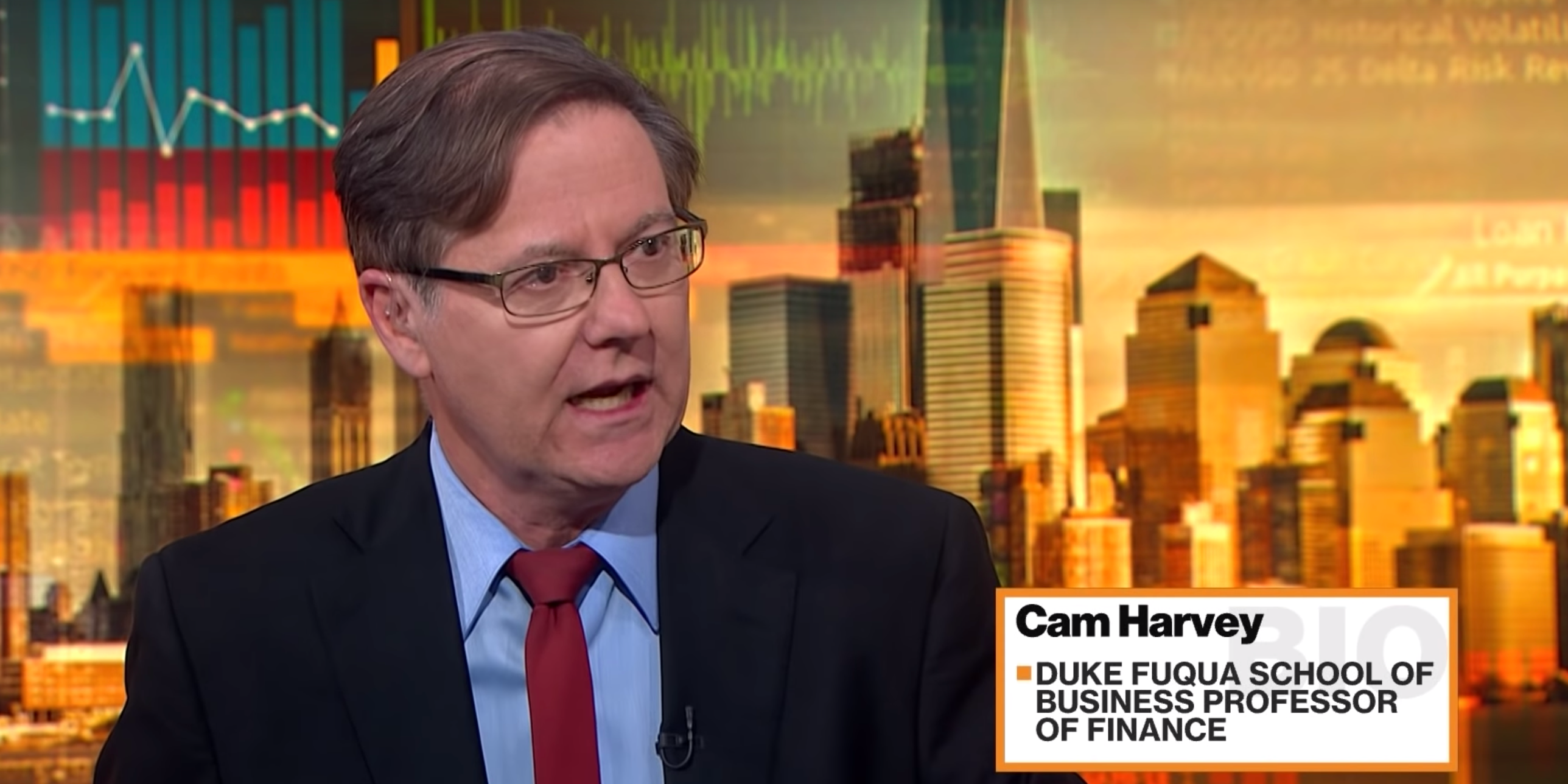- Duke University Professor Campbell Harvey, the inventor of the inverted yield curve as a recession indicator, said investors should pay attention to the latest signal and prepare in an interview with “The Compound.”
- Harvey earlier told Bloomberg the yield curve was flashing a “code red” signal.
- Given its long track record of predicting recessions, the indicator could serve as a heads up that gives investors time to prepare for another downturn, Harvey said.
- Read more on Markets Insider.
Campbell Harvey, the Duke professor who uncovered the inverted yield curve as a recession signal, says investors should start preparing for a downturn now.
“It’s way better to have a plan to go by than find yourself in a situation where the recession hits and you have to improvise,” Harvey said in an interview with Ritholtz Wealth Management CEO Josh Brown on “The Compound.”
The difference between 10-year and three-month Treasury yields has been below zero since May. This so-called yield curve inversion is important because similar kinks have preceded all seven recessions since 1950. Harvey first drew attention to the yield curve signal in his 1986 dissertation at the University of Chicago Booth School of Business.
When Harvey published his dissertation, the inverted yield curve had predicted four recessions. It’s gone on to indicate three more since, including the Great Financial Crisis in 2008.
Now that the indicator is inverted again, he's been cautioning investors and businesses about what it means and how to prepare.
In an earlier interview with Bloomberg, Harvey said that the indicator is flashing "code red" and that it's "really hard to ignore."
Harvey also points out that the meaning of the indicator has shifted slightly since the 2008 financial crisis - and that actually could be a good thing. Now, he says, consumers, investors, and businesses that pay attention to the curve as a leading indicator - meaning that it precedes a recession by six to 18 months - can slow down spending and prepare to make it through an upcoming downturn.
While spending less can lead to slower growth, it's can also be seen as risk management, Harvey told Brown. He doesn't think that this is a "self-fulfilling prophecy," or that the indicator could cause a recession because it damages sentiment.
Because his model suggests slower growth - and its not the only indicator reflecting it- it has given an accurate signal even if the US does dodge a recession, he told Bloomberg. His hope is that because the indicator is getting more notice post the great financial crisis, it might actually help the US steer clear of one.
"If a recession occurs next year, at least it will not be a surprise like the global financial crisis recession," he told Bloomberg.

